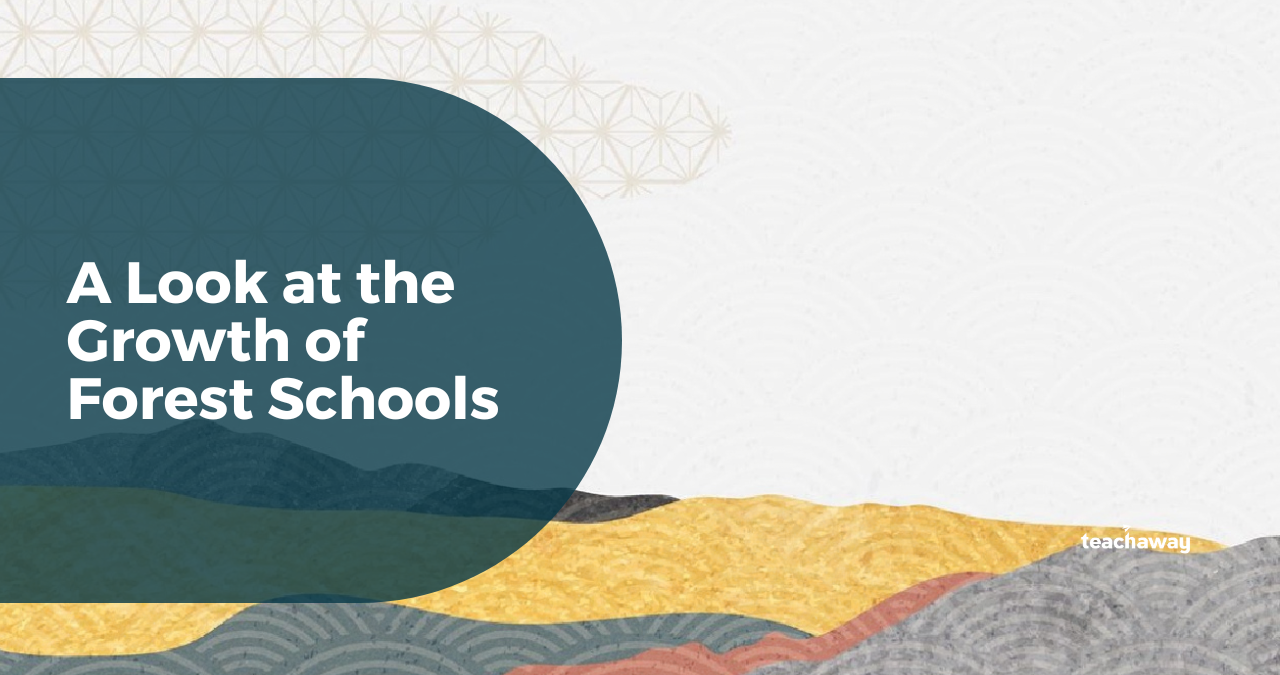If your school has been struggling to balance academic rigor with the growing demand for nature-based, experiential education, you know how crucial it is to stay ahead of educational trends.
Enter forest schools—a transformative movement reshaping education worldwide. From Japan to the UK to the US and beyond, forest schools are growing and promoting student-led learning
Forest schools uniquely combine outdoor learning with traditional academic goals, providing a solution for creating well-rounded educational experiences that cultivate resilient, environmentally conscious students who thrive in both nature and the classroom.
Here’s a run down on forest schools and the principles they offer that schools can adopt.
What Are Forest Schools?
Forest schools are outdoor educational programs that emphasize hands-on learning in natural environments, typically woodlands or forests.
These programs focus on child-led exploration, play-based learning, and fostering a connection with nature.
Originating in Scandinavia in the 1950s, forest schools have since gained popularity globally, spreading across Europe, North America, and Asia.
What’s The Difference Between Montessori And Forest Schools?
While both Montessori and forest schools emphasize child-led learning, they differ in several key aspects:
- Environment: Montessori schools operate primarily indoors with carefully prepared environments, while forest schools take place outdoors in natural settings.
- Materials: Montessori uses specific educational materials, whereas forest schools utilize natural objects found in the environment.
- Structure: Montessori follows a more structured curriculum, while forest schools offer a more flexible, nature-based approach.
- Age groups: Montessori typically caters to children from infancy through adolescence, while forest schools often focus on early childhood and primary education.
The Growing Popularity of Forest Schools
Forest schools have spread globally, adapting to local cultures. Countries like South Korea are creating hundreds of forest kindergarten spaces, while Singapore integrates these concepts into its education system.
Several factors contribute to their increasing prevalence:
- Holistic Child Development: Forest schools promote physical, cognitive, social, and emotional growth through outdoor activities.
- Environmental Awareness: They instill respect for nature and teach sustainability.
- Alternative Education: They provide a child-centered approach appealing to parents and educators seeking diverse learning environments.
- Mental Health Benefits: Time spent in nature improves well-being and reduces stress.
Quick Facts About Forest Schools Around The World
- At the end of 2019, the UK Forest School Association estimated around 5,000 qualified leaders working in approximately 3,000–3,500 settings.
- In Japan, “forest education” has been part of compulsory schooling for over a century.
- In South Korea, 99% of forest kindergartens operate under national standards for early childhood education.
Case Study: Swedish Forest School Research
A 13 month Swedish study found that children attending forest school were happier, had better social skills, improved attention spans and coordination compared to city nursery children.
Key findings included:
- Improved physical development, balance, and coordination
- Enhanced problem-solving abilities and creativity
- Increased empathy, cooperation, and self-regulation
- Improved language development and communication skills
- Stronger connection to nature and early signs of environmental stewardship
The study suggests that these benefits extended beyond the immediate program, with children showing sustained improvements even after returning to traditional classroom settings.
Implementing Forest School Principles in Your Institution
1. Integrate Outdoor Learning
Incorporate regular outdoor sessions into your curriculum, allowing students to explore and learn in natural settings.
2. Promote Risk Assessment Skills
Encourage supervised risk-taking activities, such as tree climbing, to develop children’s decision-making and risk assessment abilities.
3. Embrace All Weather Conditions
Adopt the forest school mantra of “there’s no such thing as bad weather, only inappropriate clothing” to foster resilience and adaptability in students.
4. Align with National Curriculum
While forest schools have a unique approach, find ways to complement your existing curriculum with outdoor experiences in subjects like science, art, and physical education.
5. Support Special Educational Needs
Consider how forest school principles can benefit students with special educational needs, as these programs often provide cost-effective alternatives to traditional support methods.
Key Takeaways
- Holistic Development: Forest schools support physical, emotional, social, and cognitive growth through hands-on outdoor learning.
- Environmental Stewardship: Immersion in nature fosters respect for the environment and teaches sustainability.
- Student-Led Learning: Children guide their own educational experiences, enhancing creativity and independence.
- Mental Health Benefits: Time spent outdoors reduces stress and improves emotional well-being.
- Community Engagement: Collaboration among parents, educators, and local organizations enriches outdoor education experiences.
To stay ahead of this growing trend and ensure your institution is prepared for the future of education, consider hiring teachers with experience in outdoor and experiential learning.
Teach Away can help you recruit qualified educators who can bring forest school principles to your classrooms and outdoor spaces.
